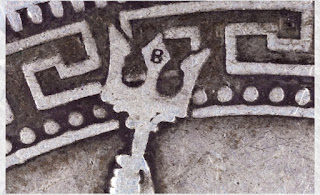Trade dollars are silver coins minted as trade coins by few countries to facilitate trade with the ''Orient''. They all approximated in weight and fineness to the Spanish dollar, which had set the standard for a de facto common currency for trade in the Far East.
British Trade Dollar
Spanish Dollar. The existence of trade dollars came about because of the popularity of the silver Spanish dollar in the Far East, such as in China, East Asia and the East Indies. Following the establishment of Spanish Philippines as part of the Spanish East Indies, Manila became an entrepot for Chinese goods in one direction and Spanish silver dollar, from across the Pacific to the Spanish held mints and silver mines of Mexico, Peru and Bolivia in the other. The Manila-Acapulco Galleon Trade, led from the 16th century onwards to the wide circulation of ''piece of eight'' as a standard of trade. The official Spanish name for the ''pieces of eight'' was the Reale De a Ocho, Eight Reales, as a ''piece of eight'' was worth eight reals.
This was widely used as the first international currency because of its uniformity in standard and milling characteristics. Some countries countermarked the Spanish dollar to be used as their local currency. It remained a legal tender in the United States until the Coinage Act of 1857. Several other currencies such as the Canadian dollar, the Japanese yen, the Chinese yuan, the Philippine peso and several other currencies were based on the Spanish dollar.
Infact the symbol of the Dollar ($) supposedly grew out of the Spanish and Spanish American scribal abbreviation pS for pesos. The ''s'' gradually came to be written over the ''p'' developing into the ''$''. mark
Emergence of the Dollar symbol
China. The high regard in which these coins came to be held, led to the minting of the silver Chinese yuan, a coin designed to resemble the Spanish one. These Chinese ''dragon dollars'' not only circulated in China, but together with original coins of Spanish-Mexican origin became the preferred currency of trade between China and its neighbours.
This continued till the late half of the 19th century. These would weigh 27.2 g and fineness .900.
France. To control the money supply in French Indochina in 1885, the French introduced a new silver Piastre de commerce and associated subsidiary coinage throughout the Indo-Chinese colonies in order to increase monetary stability.
The piastre was initially equivalent to the Mexican peso. The piastre was therefore a direct lineal descendent of the Spanish ''pieces of eight.''
Japan. The Japanese Trade Dollar, issued from 1875 to 1877 was identical in design to the trade dollar except it had 26.96 g of silver. The majority of the trade dollars were counter stamped with the character ''gin'' (Japanese for silver). The Osaka mint placed the mark on the left side of the reverse, the Tokyo mint on the right. The coins were then released for use in Japanese-occupied Taiwan, Korea and Lushunkou.
United Kingdom. With the extension of British trading interests in the East, especially after the founding of Singapore in 1819 and Hong Kong in 1842, it became necessary to produce a special Dollar so as to remove the reliance of a British colony upon the various foreign coins then in circulation. These Trade Dollars, minted exclusively for use in the Far East, depict Britannia standing on shore. holding a trident in one hand and balancing a British shield in the other, with a merchant ship under full sail in the background. On the reverse is an arabesque design with the Chinese symbol of longevity in the center, and the denomination in two languages, Chinese and Jawi Malay.
Bombay mintmark in the trident
The British Trade Dollar was minted from 1895 for Hong Kong and the Straits Settlements. But after the Straits dollar was introduced to the Straits Settlements in 1903, it became exclusively a Hong Kong coin produced till 1935. Those with Mint mark ''B'' were produced in the Bombay mint, others marked ''C'' were struck in Calcutta. Those with no mint marks were produced in London. Mint mark ''C'' can be found in the ground between the left foot of Britannia and base of the shield, while mintmark ''B'' is located in the center prong of the Trident.
United States. The trade dollar was issued from 1873 to 1885 from mints at Philadelphia, Pennsylvania, Carson City and San Francisco.
Business strike trade dollars were last produced in 1878 and proof coin production continued till 1885. The trade dollar was meant to improve trade with the Orient, China in particular.











No comments:
Post a Comment
Any inputs or feedback is welcome!